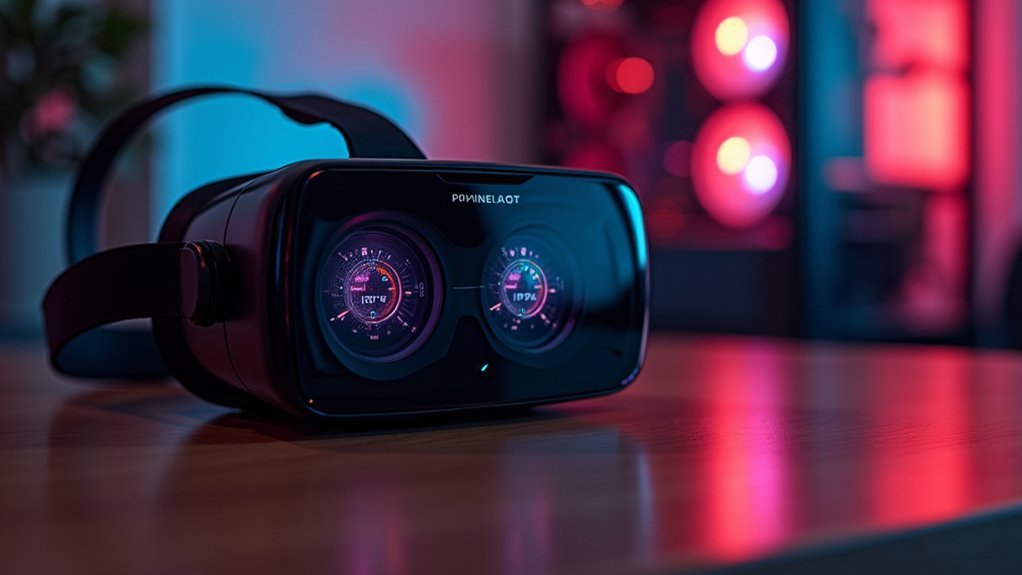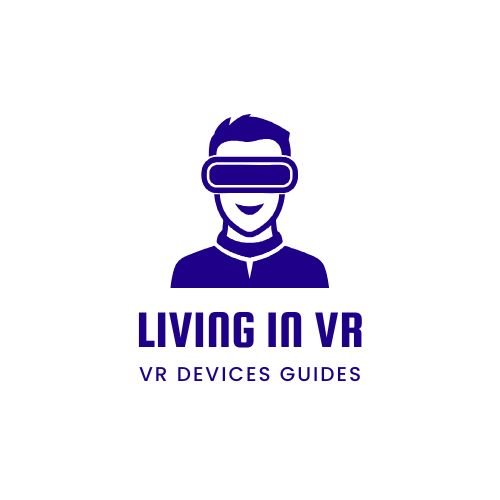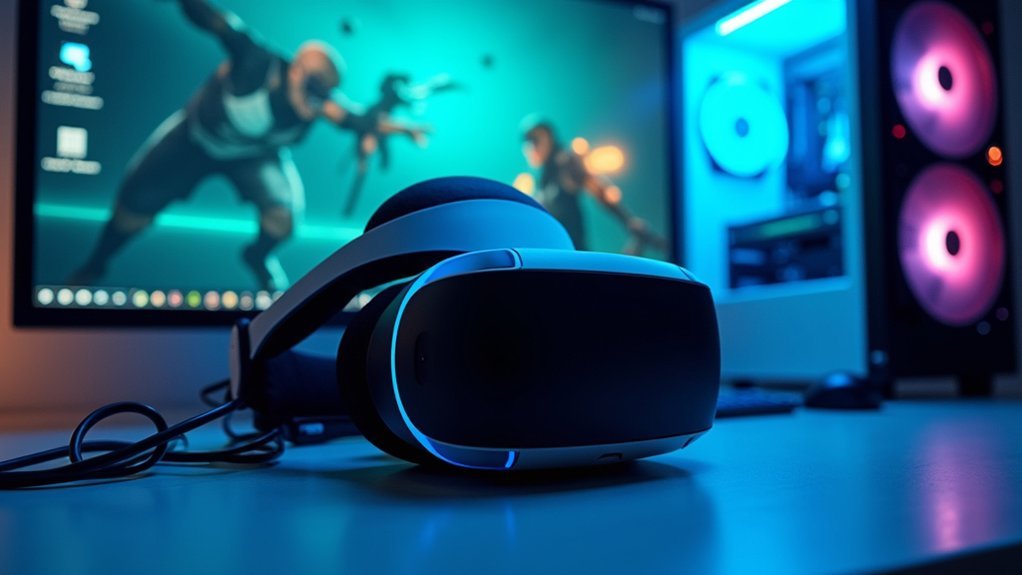You can eliminate VR multiplayer lag by implementing five proven techniques: optimize your IPD configuration and hardware settings to prevent 40% of cyber sickness cases, deploy edge computing solutions that reduce latency by 58% on average, configure your graphics card’s ultra-low latency mode and frame synchronization, enable QoS router settings while using wired connections for stable data transmission, and utilize prediction algorithms with client-side rendering for smoother gameplay. These strategies will transform your multiplayer experience.
Optimize Hardware Settings and IPD Configuration

When you’re experiencing lag in VR multiplayer games, your hardware configuration often serves as the foundation for smooth performance.
Start with proper IPD configuration, as incorrect settings cause 40% of cyber sickness cases and directly impact your gaming comfort. Invest in advanced headsets featuring automatic IPD adjustment and 90Hz refresh rates to eliminate manual calibration errors.
Proper IPD configuration prevents 40% of cyber sickness cases while automatic adjustment headsets eliminate calibration errors entirely.
Target ultra-high resolution displays exceeding 70 pixels per degree for enhanced visual fidelity and responsiveness. Maintain video passthrough latency below 20 milliseconds for real-time competitive interactions.
Optimize your graphics settings by reducing rendering resolution and disabling terrain shadows to decrease CPU and GPU load. These hardware adjustments create the ideal foundation for lag-free multiplayer sessions, ensuring you’ll maintain competitive advantage while avoiding motion sickness.
Implement Edge Computing and Server Proximity Solutions
Beyond hardware optimization, you’ll need strategic server placement to eliminate the network bottlenecks that plague VR multiplayer experiences.
Edge computing transforms how game servers deliver low latency performance by processing data closer to your location rather than routing through distant data centers.
Edgegap’s edge network delivers significant advantages for VR experiences:
- Strategic positioning across 615+ locations reduces latency by an average of 58% compared to traditional cloud solutions
- Containerized game servers enable on-demand deployment based on player demand and geographic distribution
- Enhanced fairness increases competitive balance by 28% through consistent response times
- Optimized WiFi performance addresses VR devices’ wireless connectivity dependencies
- Real-time processing minimizes delays caused by data traveling through multiple network routers
This proximity-based approach guarantees smoother, more responsive multiplayer interactions.
Configure Graphics Cards for Low-Latency Performance

Your GPU configuration directly impacts VR multiplayer performance just as much as server proximity. For NVIDIA cards, enable low latency mode and set it to Ultra to greatly reduce real time rendering delays.
GPU settings matter as much as server distance for VR multiplayer—NVIDIA users should enable Ultra low latency mode for optimal performance.
Activate G-Sync or G-Sync compatible settings to synchronize frame rates and enhance visual fluidity, minimizing perceived lag during intense multiplayer sessions.
AMD users should enable FreeSync and cap frame rates just below their monitor’s refresh rate to improve responsiveness.
Use Rivatuner Statistics Server to match your in-game maximum frame rate with your display’s refresh rate for peak performance.
Replace traditional V-Sync with V-Sync Fast to maintain smooth visuals while reducing input lag.
These optimizations work alongside network latency improvements to create seamless VR multiplayer experiences.
Apply Network Optimization and Quality of Service Settings
While GPU optimization improves rendering performance, network configuration determines how smoothly data flows between your VR headset and multiplayer servers.
Network optimization and Quality of Service settings directly impact your VR multiplayer experience. You can greatly reduce latency through strategic configuration:
- Enable QoS settings on your router to prioritize gaming traffic over streaming and downloads
- Use wired connections instead of WiFi for faster, more stable data transmission
- Monitor network performance with profiling tools to identify latency bottlenecks
- Limit bandwidth usage from non-essential devices to reduce network congestion
- Deploy edge computing solutions like Edgegap to place game servers closer to players
These adjustments guarantee consistent data flow, preventing the stuttering and disconnections that plague VR multiplayer sessions.
Utilize Prediction Algorithms and Lag Compensation Techniques

Even with optimized network settings, latency remains an inevitable challenge in VR multiplayer gaming.
You’ll need to implement prediction algorithms that anticipate player actions based on previous inputs, creating smoother interactions during network delays. Client-side prediction techniques let you render movements locally while awaiting server confirmation, maintaining responsiveness.
Prediction algorithms anticipate player actions from previous inputs, enabling smooth VR interactions despite network delays and maintaining local responsiveness.
Lag compensation mechanisms are vital for accommodating high-latency players.
These systems simulate actions using historical data, guaranteeing fair competition regardless of connection quality. You can implement interpolation techniques to smooth animations during latency spikes, minimizing visual disruptions.
Effective lag compensation strategies create consistent experiences for all players.
By combining client-side prediction with server-side validation, you’ll maintain both responsiveness and accuracy.
These techniques guarantee fairness while preserving the immersive quality essential for successful VR multiplayer environments.
Frequently Asked Questions
How Do I Reduce VR Lag?
You’ll reduce VR lag by adjusting your IPD settings correctly, using displays with 70+ pixels per degree, maintaining sub-20ms latency, implementing 90Hz+ refresh rates, and utilizing edge computing solutions.





Leave a Reply